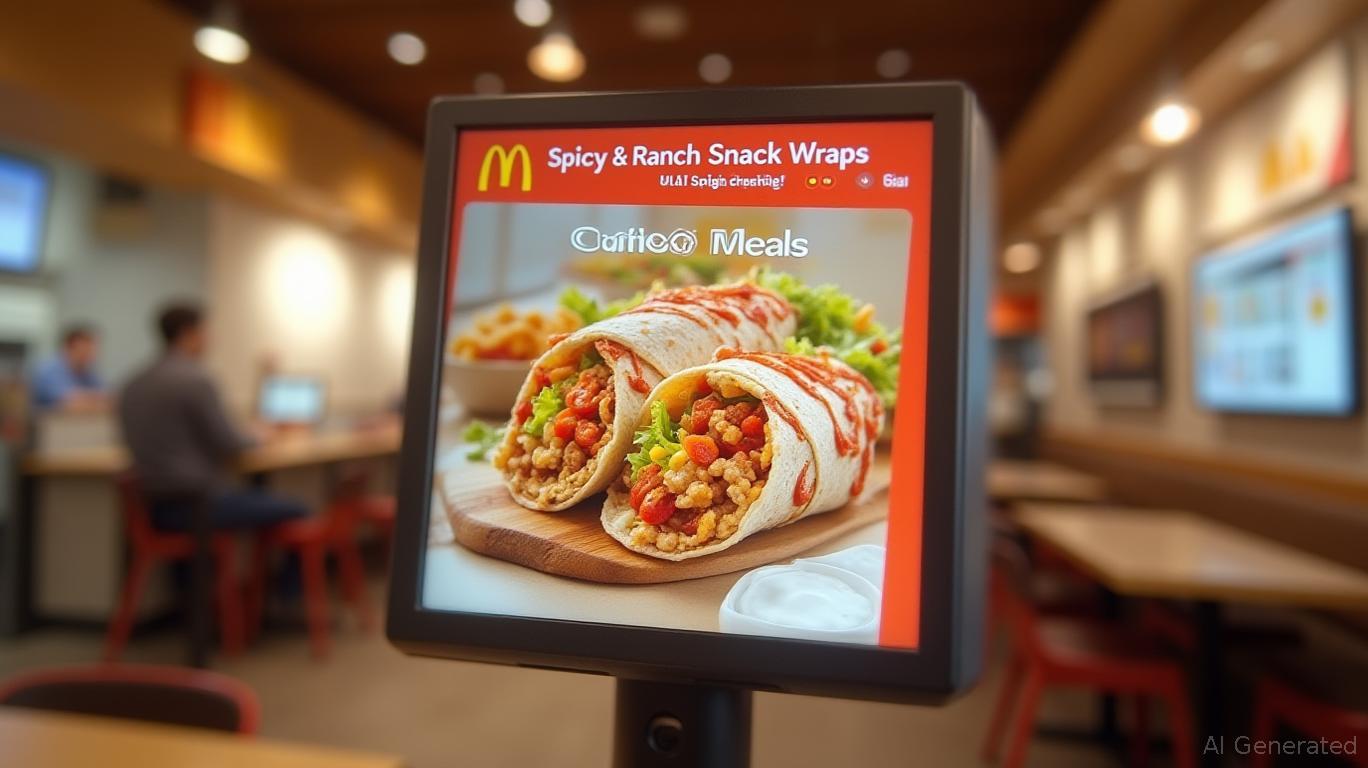McDonald's Snack Wrap Rollout: A Strategic Play for Snacking Dominance and Margin Growth
The Snack Wrap's permanent return to
U.S. menus on July 10, 2025, marks a pivotal moment for the fast-food giant. This cult-classic item, which disappeared in 2016, is now positioned as a catalyst to reclaim market share in the booming snacking category while addressing evolving consumer preferences for convenience, affordability, and health-conscious choices. With global ambitions and a focus on operational efficiency, the Snack Wrap could be the linchpin for McDonald's long-term growth—and a compelling investment thesis.
The Snack Wrap's Revival: A Triumph of Customer Demand
The Snack Wrap's comeback is no accident. Years of grassroots advocacy—including a 2021 Change.org petition with nearly 20,000 signatures and viral TikTok campaigns—pushed McDonald's to revive the item. This reflects a broader shift in fast-food strategy: listening to customers to drive menu innovation. The Snack Wrap's return isn't just nostalgia; it's a calculated move to cater to a demographic craving for small, on-the-go meals that feel healthier than traditional burgers. With two flavors—Spicy (habanero-kissed) and Ranch (garlic-and-onion-infused)—the wraps offer craveable taste without the guilt of heavier options.
The product's $2.99 price point (comparable to Burger King's Royal Crispy Wrap) targets budget-conscious consumers, a critical segment in an inflationary environment. Combined with combo meals (two wraps, fries, and a drink), the Snack Wrap positions McDonald's to capitalize on the $300 billion global chicken market, which is outpacing beef sales.
Global Scalability: McDonald's Secret Weapon
McDonald's global footprint—83,000+ restaurants worldwide—creates a powerful launchpad for the Snack Wrap. While the U.S. rollout is first, plans are underway to introduce the item to “a few other markets” by 2026, with broader expansion expected post-testing. Key considerations include localizing flavors: the Spicy variant's habanero kick might be adjusted in regions with milder palates, while the Ranch version could incorporate regional herbs.
The McCrispy Strip, the Snack Wrap's chicken base, is already in 70+ markets, reducing operational friction for global rollouts. This economies-of-scale advantage ensures McDonald's can produce the Snack Wrap at lower costs than smaller competitors, maintaining margins even as it scales.
Digital Synergies: Boosting Efficiency and Sales
While the provided data doesn't explicitly tie digital ordering to Snack Wrap margins, McDonald's broader digital strategies suggest hidden synergies. The Snack Wrap's small, portable format aligns with the rise of mobile ordering and delivery—a segment McDonald's is aggressively targeting. Its mobile app, which now accounts for 30% of U.S. orders, could drive Snack Wrap sales through geo-targeted promotions and combo meal upsells.
Moreover, McDonald's investment in AI-driven supply chain tools (via Google Cloud partnerships) ensures smooth Snack Wrap distribution, minimizing waste and optimizing inventory. This operational precision is critical for maintaining margins in a competitive landscape where rivals like Popeyes and Chick-fil-A are also chasing the chicken snacking market.
Margin Expansion: Niche Dominance and Loyalty
The Snack Wrap isn't just a product—it's a gateway to McDonald's loyalty program, which generated $8 billion in Q1 2025 sales. Frequent buyers could be incentivized with Snack Wrap discounts or free upgrades, boosting repeat visits. Meanwhile, the item's $1.29 standalone price (versus combos) attracts impulse buyers, expanding customer bases in low-income areas.
Health-conscious positioning also opens doors to partnerships with wellness brands or certifications (e.g., “better-for-you” labels), justifying premium pricing. This dual strategy—value for affordability and premium for health—creates margin flexibility.
Risks and Considerations
- Execution: Global rollouts require flawless training and supply chain management. A misstep could tarnish the Snack Wrap's reputation.
- Competition: Rivals like Popeyes (which launched chicken wraps in June 2025) are nipping at McDonald's heels. Sustained innovation will be key.
- Taste Fatigue: The two-flavor launch may disappoint fans of discontinued options (e.g., honey mustard). Future variants could address this.
Investment Takeaway: A Growth Catalyst with Long-Term Legs
The Snack Wrap isn't a fad—it's a strategic move to own the $5.2 billion global snacking market, which is growing at a 5.5% CAGR. With its combination of nostalgia, health appeal, and scalability, the product positions McDonald's to outpace peers in chicken-centric sales.
For investors, McDonald's stock remains undervalued relative to its five-year average P/E ratio, despite its robust dividend yield (~1.2%) and 6.8% YTD stock growth. The Snack Wrap's success could further narrow the gap between its valuation and peers like Starbucks (SBUX), which trades at a higher multiple for similar growth stories.
Bottom Line: McDonald's Snack Wrap rollout is more than a menu update—it's a blueprint for leveraging customer demand, global scale, and digital tools to dominate snacking. For investors seeking a stable, growth-oriented play in fast food, McDonald's remains a top pick.
Risks include execution failures, inflation-driven margin pressure, and competitive saturation. Always conduct your own research.

Comments
No comments yet